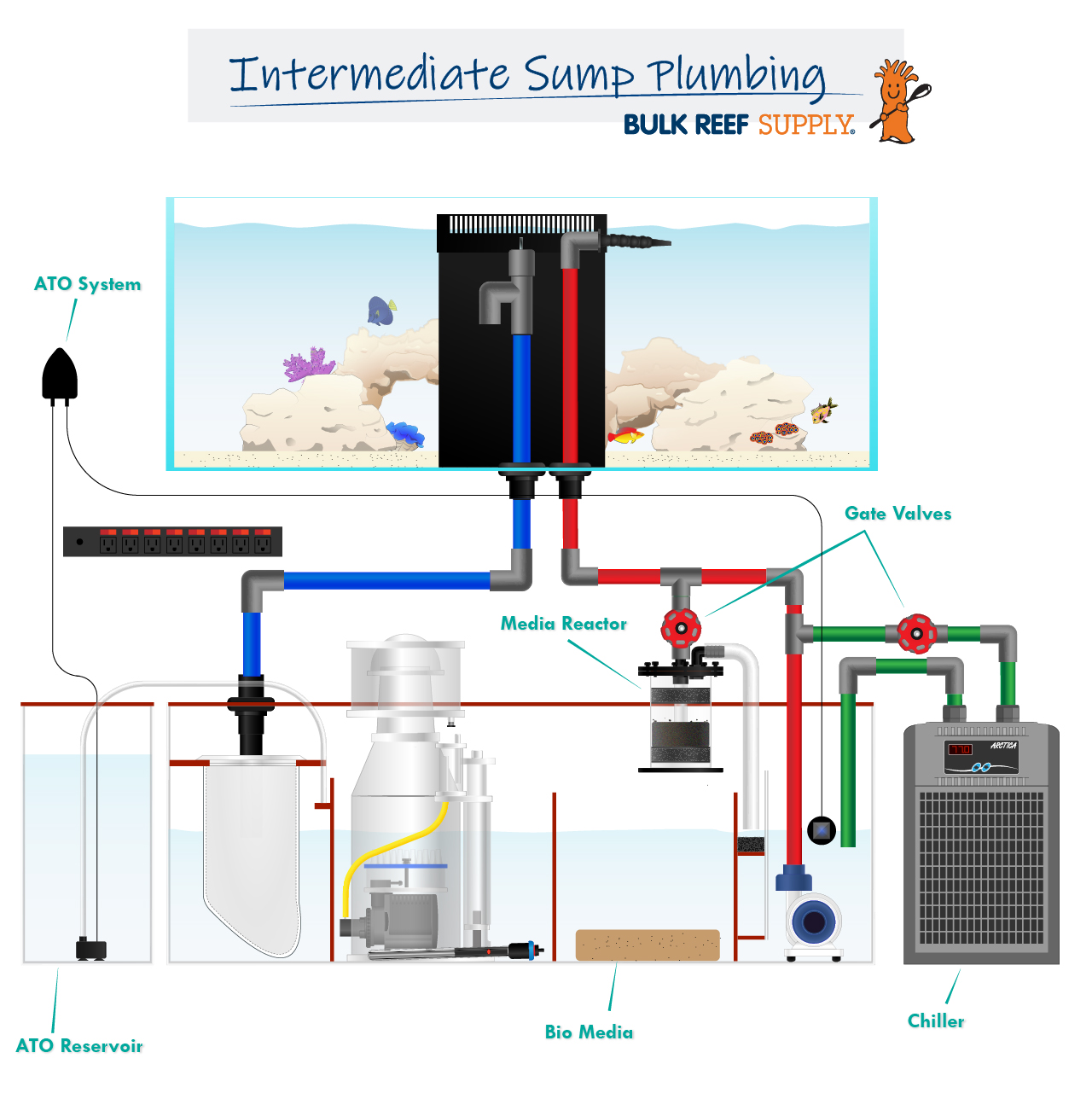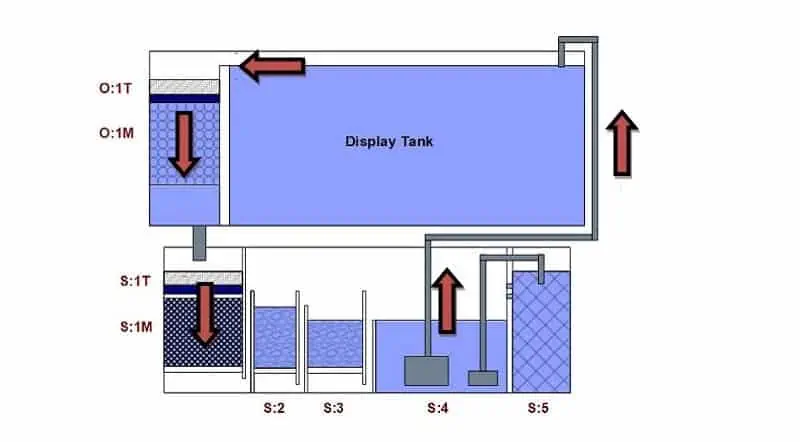Designing and setting up a freshwater aquarium sump can be an exciting and rewarding experience for any fish enthusiast. A sump is an essential component in any aquarium system, as it provides additional filtration and helps maintain the overall health of the aquatic environment. Whether you’re a beginner or an experienced aquarist, understanding the basics of sump design and setup is crucial for the success of your aquarium.
In this article, we’ll guide you through the essentials of designing and setting up a freshwater aquarium sump. We’ll discuss the benefits of having a sump, the different types of sumps available, and the key components you’ll need to consider. By the end of this article, you’ll have a solid understanding of the basics and be well on your way to creating a thriving aquatic ecosystem.

The Basics of Designing and Setting Up a Freshwater Aquarium Sump
If you’re looking to set up a freshwater aquarium sump, there are a few basic things you need to know. A sump is essentially a separate container that sits beneath your aquarium and houses equipment that helps to keep your tank clean and healthy. By setting up a sump, you can improve the overall health and appearance of your aquarium, while also making it easier to maintain. Here are the basics of designing and setting up a freshwater aquarium sump.
What is a Sump?
A sump is a separate container that sits beneath your aquarium and houses equipment that helps to keep your tank clean and healthy. The sump is connected to the aquarium via an overflow box, which allows water to flow from the tank into the sump. The water is then filtered, heated, and circulated back into the tank through a return pump.
There are many different types of sumps available on the market, ranging from basic DIY setups to more advanced systems with multiple chambers and complex filtration systems. When choosing a sump, it’s important to consider the size of your aquarium, your budget, and the specific needs of your fish and plants.
The Benefits of a Sump
There are many benefits to using a sump in your freshwater aquarium setup. First and foremost, a sump can help to improve the overall health and appearance of your tank by providing a more stable and consistent environment for your fish and plants. A sump can also make it easier to maintain your aquarium by reducing the need for frequent water changes and other maintenance tasks.
Another benefit of using a sump is that it can provide additional filtration for your aquarium. By housing a separate filtration system in the sump, you can help to remove excess nutrients, waste, and other pollutants from the water. This can help to improve the overall water quality and reduce the risk of algae blooms and other common aquarium problems.
Setting Up a Sump
Setting up a sump requires a bit of planning and preparation, but it’s a relatively straightforward process. Here are the basic steps you’ll need to follow to set up a freshwater aquarium sump:
1. Determine the size and type of sump you need based on the size of your aquarium and your specific requirements.
2. Install an overflow box on your aquarium to allow water to flow into the sump.
3. Install a return pump to circulate water back into your aquarium.
4. Install any additional equipment you need, such as heaters, protein skimmers, and other filtration systems.
5. Fill the sump with water and test the system to ensure it’s working properly.
Pros and Cons of Using a Sump
There are both pros and cons to using a sump in your freshwater aquarium setup. Here are a few of the key benefits and drawbacks to consider:
Pros:
– Improved water quality and overall health of your aquarium
– Easier maintenance and reduced need for frequent water changes
– Additional filtration options and flexibility in equipment choices
Cons:
– Requires additional space and equipment, which can be costly
– Can be more complex to set up and maintain than a basic aquarium setup
– May require additional monitoring and maintenance to ensure proper function
Conclusion
Overall, a freshwater aquarium sump can be a valuable addition to your aquarium setup, providing additional filtration, improved water quality, and easier maintenance. By taking the time to design and set up your sump properly, you can help to create a healthy and thriving environment for your fish and plants. Whether you’re a seasoned aquarium hobbyist or just starting out, a sump can be a great way to take your aquarium to the next level.
Frequently Asked Questions
What Is a Freshwater Aquarium Sump and Why Do I Need One?
A freshwater aquarium sump is an external filtration system that can be installed beneath an aquarium to provide additional filtration and water volume. The sump is a separate container that houses various equipment, such as heaters, protein skimmers, and other filtration media, which help to maintain a healthy and stable aquatic environment for fish and other aquatic creatures.
There are several advantages to using a sump in a freshwater aquarium. Firstly, it provides additional water volume, which helps to dilute waste and toxins in the water. Secondly, it allows for more space for equipment, which can improve the effectiveness of the filtration system. Finally, a sump can also help to reduce noise and clutter in the main aquarium, as equipment can be housed in the sump instead.
How Do I Design a Freshwater Aquarium Sump?
Designing a freshwater aquarium sump can be a complex process, as it involves selecting and arranging various pieces of equipment and filtration media. It is important to consider the size of the sump, the amount of water it can hold, and the type of equipment that will be used.
When designing a sump, it is essential to consider the needs of the fish and other aquatic creatures that will be living in the aquarium. The sump should be designed to provide the appropriate level of filtration, oxygenation, and water flow for the specific species that will be kept in the aquarium.
How Do I Set Up a Freshwater Aquarium Sump?
Setting up a freshwater aquarium sump involves several steps. Firstly, the sump should be positioned beneath the aquarium and connected to the main tank via a series of pipes or hoses. The equipment, such as heaters, protein skimmers, and filtration media, should then be installed in the sump.
Once the equipment is installed, the sump should be filled with water and the system should be tested to ensure that it is functioning correctly. It is important to monitor the water parameters, such as temperature, pH, and ammonia levels, to ensure that the aquarium is healthy and stable.
What Are the Pros and Cons of Using a Freshwater Aquarium Sump?
There are several pros and cons to using a freshwater aquarium sump. One of the main advantages is that it provides additional water volume and filtration, which can help to maintain a healthy and stable aquatic environment. It also allows for more space for equipment, which can improve the effectiveness of the filtration system.
However, there are also some disadvantages to using a sump. Firstly, it can be expensive to purchase and set up. Additionally, it can take up a lot of space and may not be suitable for smaller aquariums. Finally, maintaining a sump can be more complex than maintaining a traditional filtration system, and may require more time and effort.
What Are Some Tips for Maintaining a Freshwater Aquarium Sump?
Maintaining a freshwater aquarium sump involves several tasks, such as cleaning the equipment, monitoring water parameters, and performing regular water changes. It is important to establish a regular maintenance routine and to monitor the aquarium closely to ensure that it remains healthy and stable.
Some tips for maintaining a sump include regularly cleaning and servicing the equipment, monitoring water parameters using a test kit, and performing regular water changes. It is also important to avoid overfeeding the fish and to maintain a healthy balance of fish and other aquatic creatures in the aquarium. Finally, it is essential to keep the sump and the aquarium clean and free from debris and waste.

A beginner’s guide to setting up a freshwater sump!
In conclusion, designing and setting up a freshwater aquarium sump may seem overwhelming at first, but with the right knowledge and tools, it can be a rewarding and enjoyable experience. Remember to consider the size of your tank, the type of filtration system you want to use, and the appropriate equipment needed to maintain a healthy environment for your fish.
By utilizing a sump, you can enhance the effectiveness of your filtration system, as well as create a more visually appealing aquarium. With proper maintenance and regular upkeep, your freshwater aquarium sump can be a thriving ecosystem for your fish and other aquatic life.
Overall, designing and setting up a freshwater aquarium sump requires patience, attention to detail, and a willingness to learn. But with the right approach and a bit of creativity, you can create a beautiful and healthy aquatic environment that you and your fish can enjoy for years to come.
